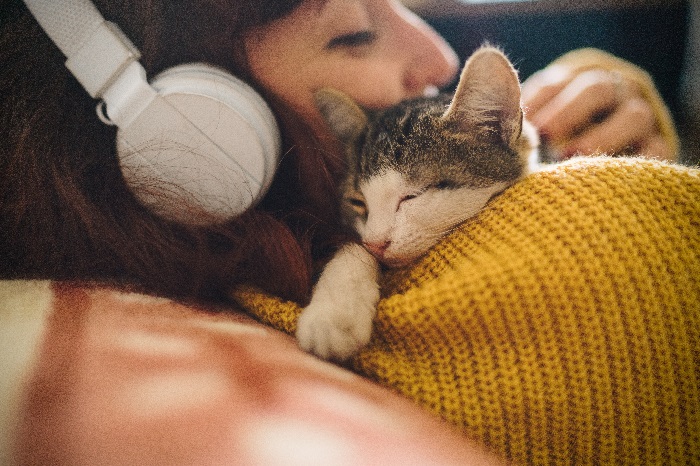The bond between humans and pets began roughly 40,000 years ago when dogs became domesticated and has continued ever since. You likely already know the benefits of pet companionship either because you had one as a kid, have one as an adult, or know someone who shares
their pet with you. Those benefits can include:
- reduced loneliness,
- mood boost,
- increased feelings of social support, and
- improved health
but did you there is the power of pets in therapy consulting as well?

Pets Help With Your Physical Health
There’s an entire branch of therapy devoted to working with animals called animal-assisted therapy. A popular one is an equine-assisted psychotherapy, also called equestrian therapy or horse therapy. The therapy is well-documented in its ability to treat issues such as grief, addiction, and trauma as people relearn how to recognize and re-cover their feelings, regulate emotions, and better communicate through working with horses. Riders also learn how to build trust with the horse and come to trust themselves again.
That said, equine-assisted therapy is wonderful if you have access to it, but what if you don’t? What if you can’t afford it or you live in a big city without any equestrian centers? You can still reap the power of pets by working with animals without becoming a full-time pet parent yourself. Whether you interact with a cat or dog in your therapist’s office, at an animal shelter, or via a cat café, animals can do the following:
- Lower your blood pressure and improve cardiovascular health
- Slow your breathing
- Release the neurotransmitter dopamine, aka, the pleasure hormone, and other feel-good hormones like serotonin, prolactin, and oxytocin
- Diminish overall physical pain
- Provide comfort
- And more
Pets Provide Mental and Emotional Benefits
Those are the physical benefits. There are also mental and emotional benefits like lowering anxiety and decreasing depression. However, something people don’t often think about is interacting with animals teaches relational skills. For instance, animals provide endless opportunities for boundary setting. Training pets requires saying “no” to things like jumping on certain furniture or eating items they shouldn’t. Pets also teach you about boundaries because you may want to pet the cat but they have no interest in being touched so they saunter away or hiss at you if you try to touch them. With pets, you learn to honor another being’s “no” because otherwise you may get scratched or bitten.
Working with animals can also create a feeling of empathy or attunement skills as you identify with their feelings: a certain meow means hunger whereas another meow means pain. The more you engage with an animal, the potentially deeper the bond you create. The deeper the bond, the more you work to understand what they’re feeling or needing (even though you may not know for sure).
Pets Allow You to Give and Receive
Pets also offer an opportunity to give and receive attention and care. When you’re upset, a dog may nudge your leg or put their head on your lap. Animals show they care about you and that can be incredibly healing if you’re a person who hasn’t or doesn’t experience that on a regular basis.
Having a therapy animal in a session can be an embodied way to gain a deeper understanding of your own projections. In Robert Johnson’s Owning Your Own Shadow, he talks about how oftentimes people project the feelings they may not be able to hold themselves onto their pets. It’s a way to make some sort of sense of your feelings before you may be able to feel them yourself. For example, someone may frequently say an animal is lonely or scared. There may be some truth to that, but, in therapy, the person talking about the animal’s supposed loneliness or fear is more of the focus of the session.
The power of pets is tangible and I hope you’re able to interact with some furry friends. Why not give it a try, if you’re able?
Journal Prompts:
- What have you learned from your interactions and bonds with animals in your lifetime?
- Can you imagine having an animal present when you go to therapy?
- What has it been like to have your animal(s) more present since Zoom therapy became more prevalent in the last few years?
The GoodTherapy Registry might be helpful to you.
We have thousands of Therapists listed with us who would love to walk with you on your journey.
Find the support you need today.
Reading suggestions:
Robert Johnson. Owning Your Own Shadow. San Francisco: HarperCollins, 1994
References
Briggs, Helen. “How did dogs become our best friends? New evidence.” BBC News. July 19, 2017. https://www.bbc.com/news/science-environment-40638584
Unknown. “Animal-Assisted Therapy Research.” UCLA Health. https://www.uclahealth.org/pac/animal-assisted-therapy. Accessed June 29, 2022.

The preceding article was solely written by the author named above. Any views and opinions expressed are not necessarily shared by GoodTherapy.org. Questions or concerns about the preceding article can be directed to the author or posted as a comment below.



